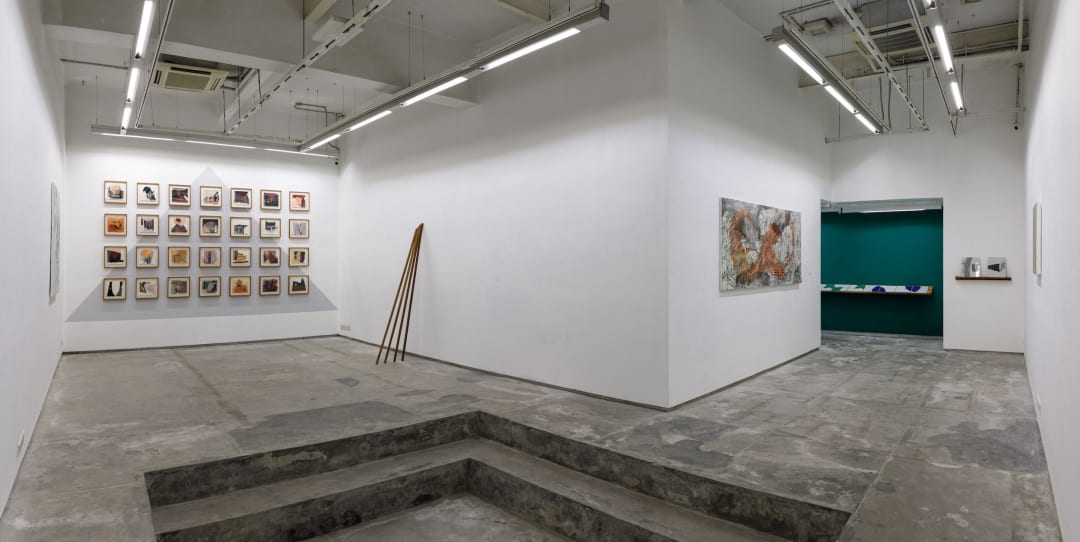Experimenter presents Rupture, an exhibition by Ayesha Sultana, Biraaj Dodiya, Nadia Kaabi Linke, Praneet Soi and Radhika Khimji. By collapsing, dislocating and deconstructing body and form, the artists in the exhibition attempt to create a rupture of vision and experience. The works in the exhibition probe the fragile equilibrium between gesture and corporality, pattern and texture, revelation and concealment.
Using painting, stitching and creating assemblage on cloth, wood and paper, Radhika Khimji develops a way of working informed by the physicality and materiality of the making process that deconstructs formulated identities. A suite of works on paper anchor this exhibition underscoring Khimji’s negotiations with material, space and form, developed by constantly deconstructing and destabilising the relationship between the body and landscape. In a related practice, Biraaj Dodiya’s painting reveal a layered and complex exploration of space. Referring to nightscapes, Dodiya’s works are informed by personal experiences and memories, exploring a moment between the discernible and the obscure. The intensely textured, tactile surface of her work carries a corporeal depth of spatial explorations.
In continuation with his work in Srinagar, Kashmir over the last few years where he worked with master craftsmen of ateliers that have been engaged in traditional craft practices, for this body of work Praneet Soi worked with porcelain craftsmen in Guangzhou. Familiarising himself with their process, the work weaves a relationship between the Qing dynasty porcelain practices and Sufi patterns linked to the Kashmiri miniature forms. Soi also embeds within the images, drawings related to the urban landscape around the area of the workshop in Haizhu Square, thus creating personal compositions that distort and deconstruct, thus creating a sense of rupture to the formal trajectory of pattern making.
Nadia Kaabi-Linke uses painting, sculpture, installation and printmaking, as recorders of time. Through the temporal nature of her mediums, she studies space and activity by creating surface impressions. Her work in the exhibition, Santa Margarita is a layered and textured wall surface taken from an old wall of the Caffè Rosso at the Piazza Santa Margarita in Venice. Kaabi-Linke’s practice may be seen as a forensic activity, revealing underlying patterns, texts and forms that builds a narrative of the disembodiment in representation through the seemingly haphazard and vandalized wall surface.
Ayesha Sultana’s practice is rooted in process and the act of making, of seeing space in continuum and of looking at the periphery and what is overlooked in plain sight. Sultana’s work on view Teak, although directly refers to the medium, belies her deep interest in movement and stability, form and structure, rhythm and repetition.
The works in the exhibition probe the fragile equilibrium between gesture and corporality, pattern and texture, revelation and concealment, rupturing how we see these intertwined positions.




